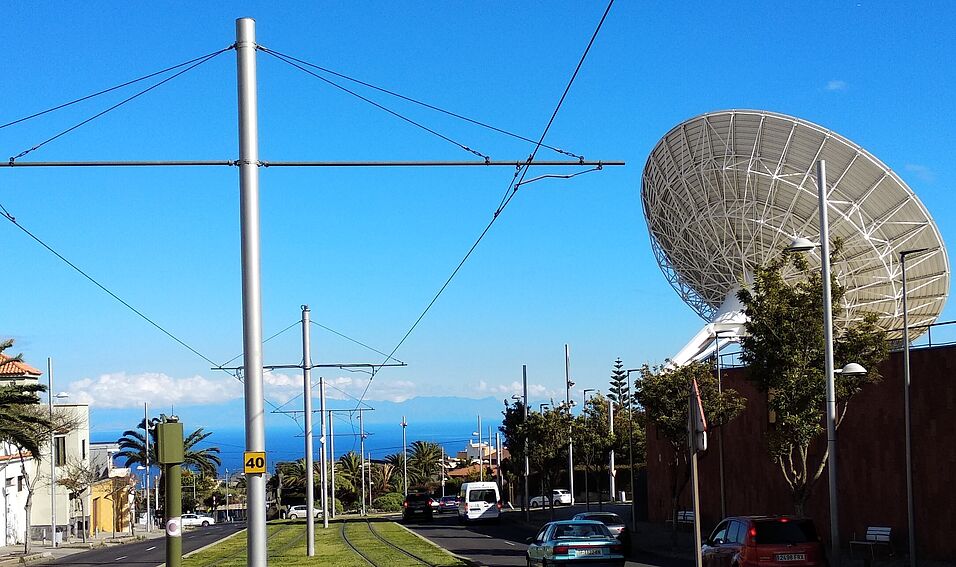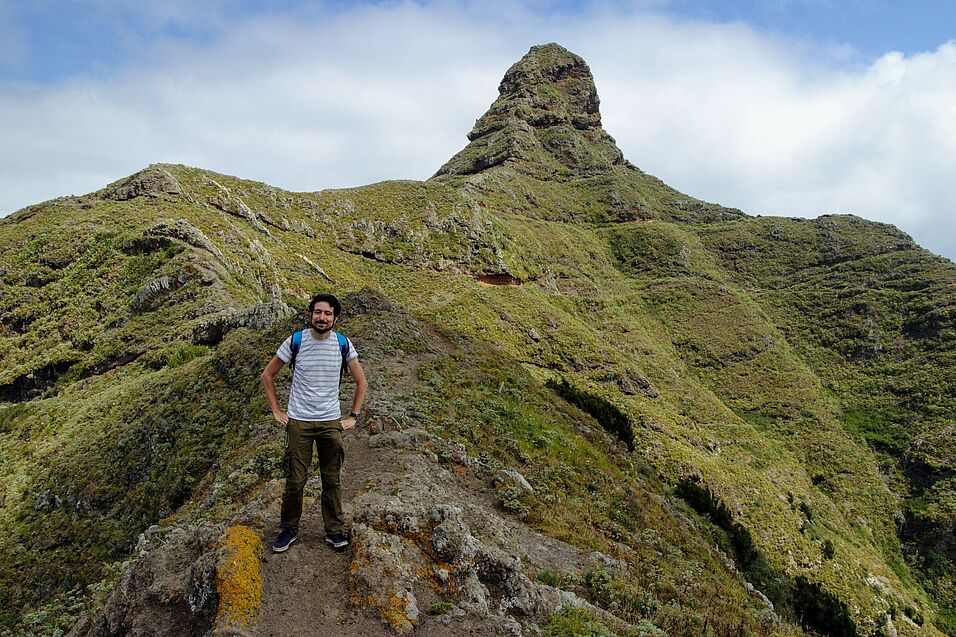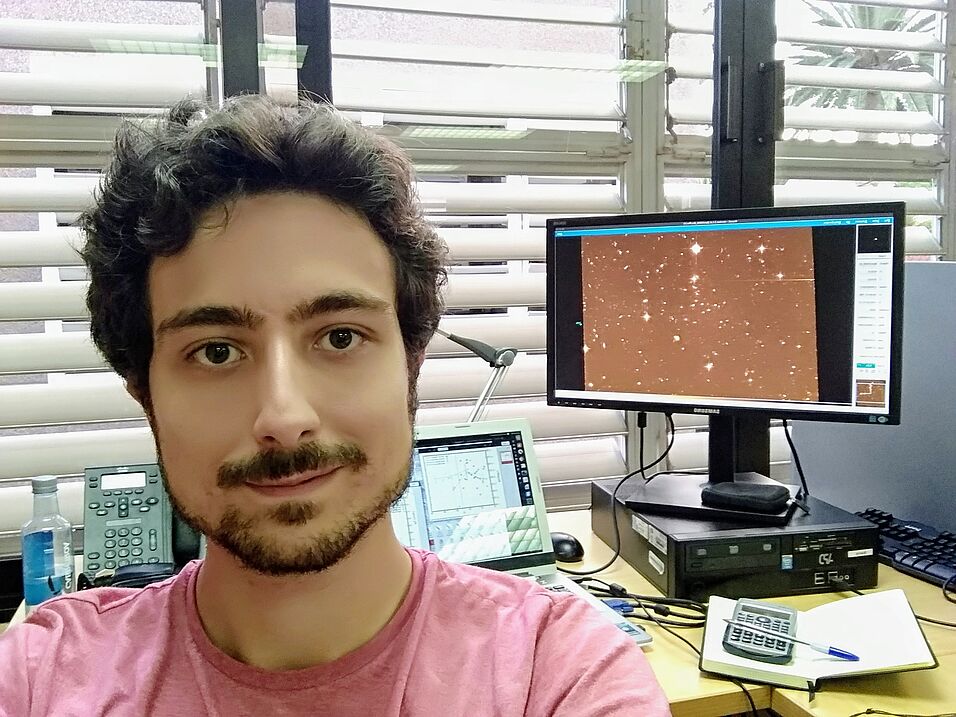The title of his dissertation is “Galaxy evolution across environment and cosmic time”. In his thesis, he aims to understand what are the processes that make galaxies change with time. Galaxies, like we humans, experience different phases throughout their lives: They are born in a messy way when large amounts of gas collaps under their own gravitational potential allowing the first stars to be formed. During their childhood galaxies acquire a disk shape and blue color, characteristic of the young populations of stars that are created from the rich gas reservoir of the galaxies. In their path towards adulthood, they gradually consume their gas and diminish their efficiency in making new stars. Finally, galaxies age and become gas depleted objects, unable to form stars, displaying elliptical morphology and red colors, characteristic of very old stellar populations. At this stage, the galaxy is ‘dead’ and no major changes are expected unless it interacts with other galaxies.
However, there is another effect to take into account: the environment. Gravity makes galaxies to be attracted to each other, bounding them to form larger structures called clusters of galaxies. From a human perspective, clusters are the equivalent to cities where hundreds of galaxies live and interact in a relatively small volume. Interestingly, galaxies that live in these large-scale structures tend to age much faster than those galaxies that live isolated, in what we could label as the countryside, continuing with our human analogy.
What are the effects that make galaxies to age faster in clusters? How the environment affects to galaxies at different moments in the history of the universe? Those are the two main questions that the PhD project tries to shed light into. To do so, José observes these cities of galaxies at three important epochs: First, when the universe was very young and clusters experience their assembling process. Second, when the universe has almost its current age and clusters are very large and complex structures dominated by red elliptical galaxies, and finally, at an intermediate stage, when the universe had approximately half its age and most changes are expected to happen.
- Why you have decided for the research stay in the Canary Islands’ Institute of Astrophysics (IAC)? Why was it important for your dissertation project?
During my PhD project, I have had the opportunity to work with data coming from the three main astronomical facilities in the world: The European Southern Observatory (ESO) in Chile, the American-Japanese observatory in the Hawaiian Islands (USA), and the Canary Islands observatory in Spain. In particular, the Canary Islands observatory currently counts with the biggest optical telescope in the world, the 10.2 meters Gran Telescopio de Canarias (GTC). A year ago, I started a collaboration to study galaxy evolution in clusters with Dr. Helmut Dannerbauer (IAC). Together we submitted a successful observing proposal using the GTC to observe a distant cluster of galaxies and investigate the imprints of the environment in the evolution of galaxies. However, the success of this kind of investigation relies on thorough preparation and analysis of the data, which is heavily affected by instrumental effects and atmospheric distortions. Many observatories develop their own scripts and routines to get rid of these effects using the experience of the people who were involved in the design of the instrument and the people operating the telescope on a daily basis. Developing this project at the IAC allowed me to get in contact with these experts and use their skill to help me achieving my science goals with the highest data quality, while at the same time it saved a lot of time in the analysis process. Furthermore, my research stay at the IAC allows me to work side by side with Dr. Dannerbauer, with whom I designed this project, and to have live discussions about the many different analysis required with him, and with other members of the staff, who are famous for their contributions to the field of galaxy evolution.
The research stay of José was funded by the Marietta Blau Grant from the OeAD.
- What will you especially remember of your time in the IAC? What surprised you?
I have not finished my research stay at the IAC yet, but one of the things that surprised me most and that I will always remember is the vibrating scientific environment that one can feel from the first-minute one enters into the IAC. The institute is composed by more than three hundred people working in different areas, from technicians and engineers focused on the development of new instrumentation for the upcoming generation of telescopes, to the people who, like me, work in scientific research from an observational or theoretical point of view. Talks and colloquia are organized almost on a daily basis and scientific discussions with different members of the staff are frequent. The institute counts with a world-class observatory which contributes to enhance the number of visitor astronomers, making this place ideal for scientific networking and international collaborations.
- Do have tips for other PhDs when planning and organizing a research stay abroad?
From my point of view, the planning of a research stay abroad should rely on three main pillars: 1) Stating a clear and concise scientific goal that can be achieved only by working in the host institution for a given period of time. This usually involves discussions and side by side work with established scientists that could improve and push further the original scientific goals. 2) A detailed explanation of the synergies that this stay will have for the student‘s scientific project, not only from the point of view of the main science goal but for other aspects that the student may have investigated before or would like to investigate in the future. 3) Use the research stay as an opportunity to build long term collaborations between the host and the visitor research groups. Science is developed in an international context where the exchange of knowledge and data can be highly beneficial for the groups involved. Moreover, this kind of collaborations help the young scientist to be known internationally and usually pave their future research career. In addition to these three main ideas, I find useful to have a tentative schedule that helps the student to organize the different milestones that he/she wants to achieve during their research abroad. Things will never go exactly as planned, but it is always good to have a scheme of your goals so that you can check your progress every now and then.



